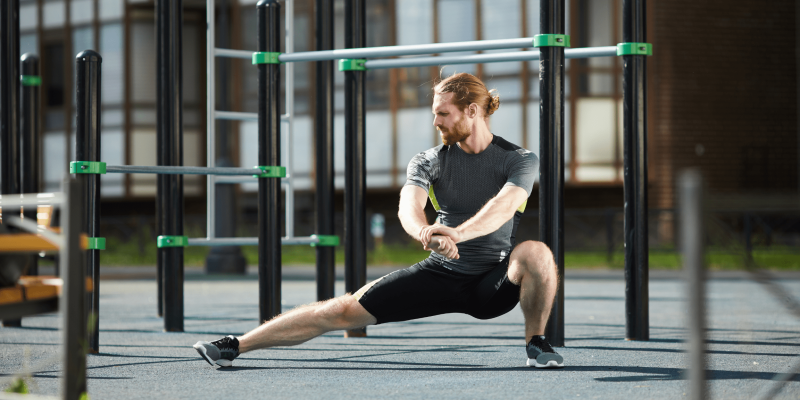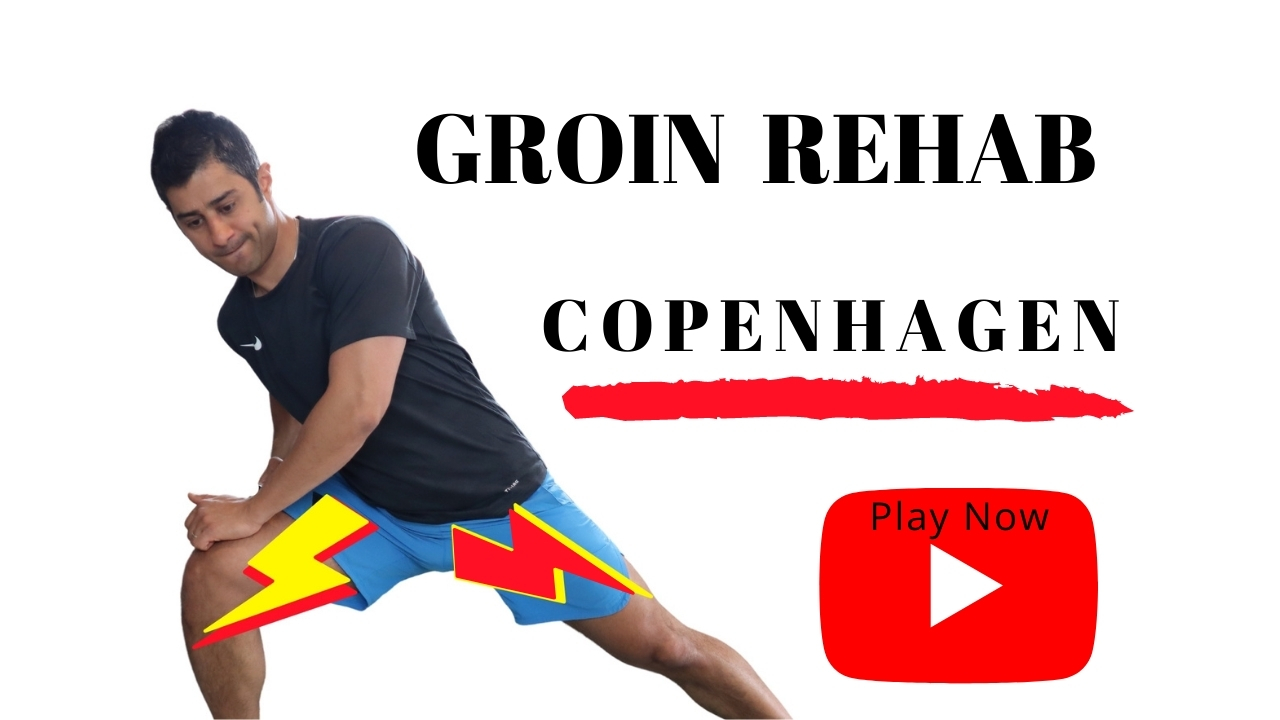A groin strain is a muscular tear or rupture to any one of your groin muscles; usually one of the hip adductor muscle group. Your body has five adductor muscles: adductor brevis, longus, magnus, pectineus, and gracilis. Any of these groin muscles can be strained but the most common is adductor longus. A groin strain usually occurs with high-speed activities such as kicking, change of direction or sprinting. Groin injuries account for 2% to 5% of all sports-related injuries with a high recurrence rate between 15% and 31% (Read more).
The groin consists of the area where the abdomen meets the legs and includes the structures of the perineum. The following structures comprise the groin: lower rectus Abdominals musculature, inguinal region, symphysis pubis, upper portions of the adductor muscles of the thigh, the genitalia, as well as the scrotum in males.
Mechanism of Injury
The most common hip and groin injury mechanisms were noncontact (48.4% of all injuries), overuse/gradual (20.4%), and player contact (13.0%). Men’s cross-country had the highest proportion of injuries due to noncontact (71.4%), women’s swimming had the highest proportion of injuries due to overuse/gradual (70.0%), and men’s wrestling had the highest proportion of injuries due to player contact (38.5%) (Read more).
Risk Factors
Another study highlighted age, adductor muscle fatigue, and inadequate stretching of the adductor muscle complex (Read more). In addition, core muscle weakness or delayed onset of transverse abdominal muscle recruitment may increase the risk of groin strain injury. Debate exists in the literature regarding the role of adductor strength and length as well as age (Read more).
What are the Symptoms of Groin Strain?
- – Groin pain and tenderness.
- – Muscles spasm or tightness in your groin muscles.
- – Pain on a stretch of your groin muscles.
- – Lower abdominal and Groin pain during groin muscle contraction – thigh squeeze.
Grades of Injury
Grade 1
A grade 1 groin strain occurs when the muscle is overstretched or torn, damaging up to 5 percent of the muscle fibers. You may be able to walk without pain, but running, jumping, kicking, or stretching may be painful.
Grade 2
A grade 2 groin strain is a tear that damages a significant percentage of the muscle fibers. This might be painful enough to make walking difficult. It will be painful to bring your thighs together.
Grade 3
A grade 3 groin strain is a tear that goes through most or all of the muscle or tendon. This usually causes a sudden, severe pain at the time when it happens. Using the injured muscle at all will be painful.

Groin Injury Treatment / Management
Most adductor strains are managed conservatively. The initial stage of groin strain management will include relative active rest from sports, Police Protocol and physical therapy. In the treatment of muscle-tendon injuries, immobilization should be limited to as short a period as possible to avoid the harmful effects of immobilization including muscle atrophy and loss of function. In some cases you may use “Analgesia” typically includes acetaminophen and non-steroidal anti-inflammatory medications.
The 2nd phase of the rehab program will be a progression of the initial phase. In this routine I shared with you a series of exercises that you can follow after a groin injury, adductor strain. This routine is the mid stage of your rehabilitation after 4 to 6 weeks. You may want to know when can you get back playing your sports. In the scute injury you may return as quickly as 4 to 8 weeks while chronic strains may take many months to achieve desired results. Meanwhile, your physical therapist will role out the root of the injury and while you’re working on your recovery you will be working on your overall movement and strength.
Adductor Squeeze + Bridge:
In this exercise you can use a basketball, foam roller or Yoga block and squeeze the ball and hold the pressure during the hip bridge movement. Try to avoid holding your breath and try this exercise for 3 sets of 10 repetitions. As a progression you can hold it longer than 5 sec as it became easier.
Wide stand Sumo squat:
In this exercise you may stand double shoulder with apart and squat down and sit on your hip and avoid jerky movement. Go to the point that you are feeling comfortable and you feel the stretch within the groin muscles. You may try this exercise for 3 sets of 10 repetitions, and gradually progress to 15 repetitions. As a progression you may try a deeper squat if you feel its getting easy.
Side Lunges Static:
You can start this routine with stand double shoulder with apart. Side lunge and sit on one hip and push through your hole foot back to the starting position. Try to go to the point that you are feeling comfortable.You may try this exercise for 3 sets of 8 to 12 repetitions. For progression, you may try a deeper rage if you feel it is getting easier.
Watch the video for the full rehab plan.
Mid Stage of Groin Rehabilitation:
Our Approach
Dublin Sports Injury Clinic is a Physical Therapy Clinic based in Pearse Street, Dublin 2. We have a holistic approach to our assessment and treatment. The initial assessment helps us to explore the cause of your Groin injury and help you to get pain free shortly and stop any further injuries. We will design a customized training program for you to start with, and we will coach you and monitor your progress closely. We will prescribe relative rest or modified activities as required. Depending on the individual stage of injury, we apply manual therapy accompanied by stretching to restore tissue elasticity and reduce the strain in the muscle-tendon unit with joint motion.
FOLLOW US ON YOUTUBE AND GET ACCESS TO OUR WEEKLY FREE REHABILITATION EXERCISES.
Next step
Want to get in touch with our team of the therapist or you are looking for some advice? Simply fill in your details below & we get in touch with you shortly.
Disclaimer: This article is for information only and should not be used for the diagnosis or treatment of medical conditions. You can contact us if you would like to book an appointment or get some advice from our therapist.


